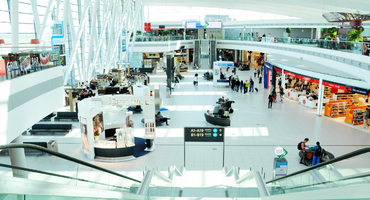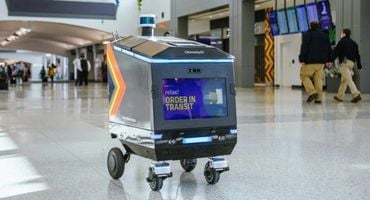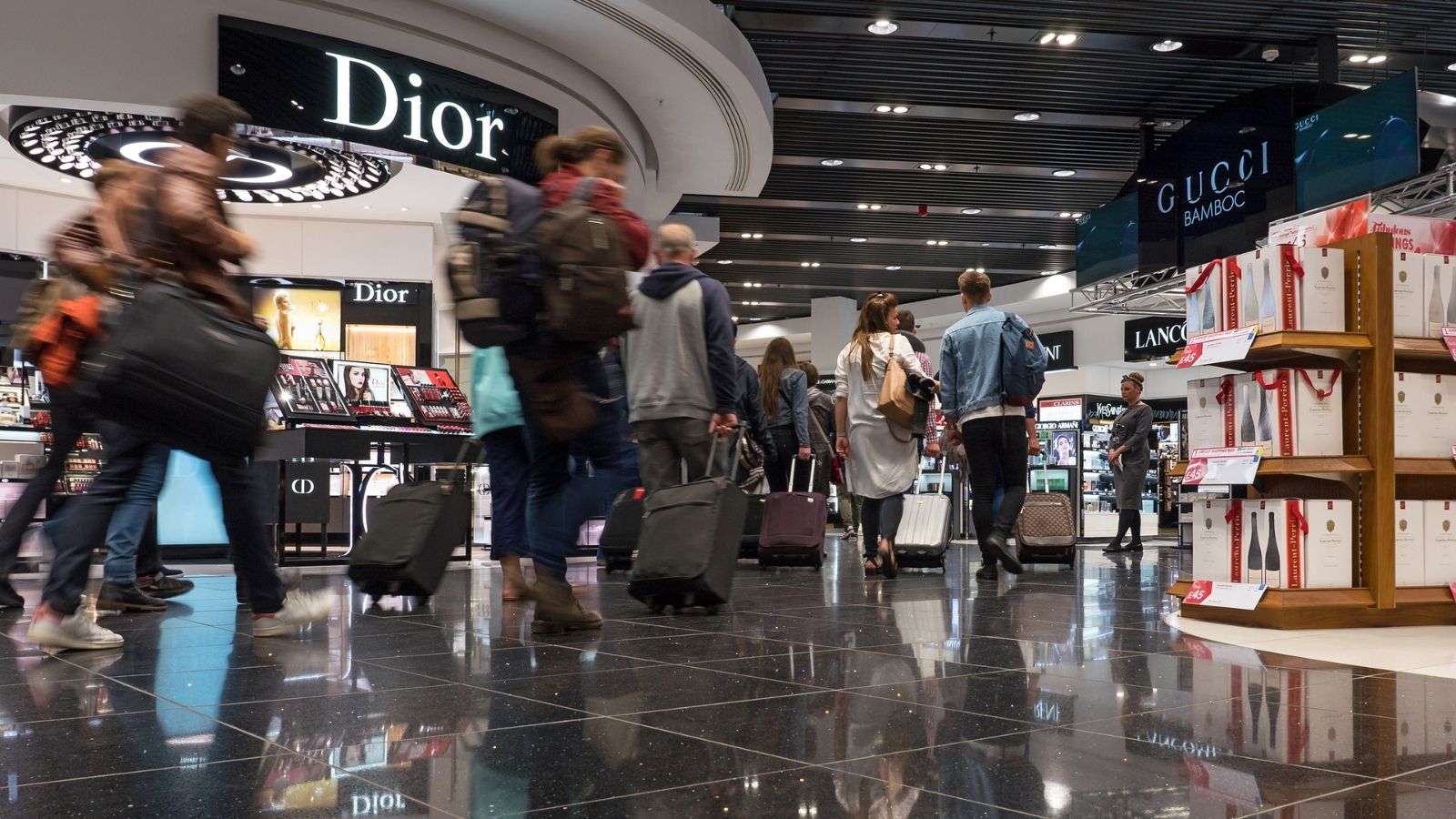Airport retail, historically a lucrative income source for airports and luxury brands, faced challenges in generating revenue during the pandemic. As of the present, the sector is transforming to adapt to the evolving landscape of the broader retail industry. Notably, the average air travel consumer demographic has shifted due to slow business travel and the increasing market share of low-cost carriers.
To stay competitive and cater to this changing market, airport retailers are proactively leveraging extensive travel data and establishing digital platforms to elevate the overall customer experience. In a move that parallel’s the rise of e-commerce, there exists an opportunity for airlines and airports to reimagine the retail experience, recognizing that traditional global retail models may no longer be a sustainable long-term option.
Catering to the Digitally Adept Generations
According to Bain, younger, more digitally adept generations with less disposable income will make up more than half of all passengers by 2025. But business and long-haul travelers are on the decline, lessening the demand for traditional and luxury airport retail experiences
Pre-pandemic, airport retail concessions contributed approximately 30% to airports' total revenue, experiencing consistent growth in sales. This prosperity was fueled by a steady flow of foot traffic, exposing affluent flyers, including business travelers and Chinese tourists, to a flourishing market of duty-free and luxury brands. However, a notable shift in the preferences of the modern flyer, characterized by a growing inclination towards digital experiences, indicates a structural transformation in how travelers interact with travel retail.
Presently, in the market, only 5-10% of travelers visit duty-free retail stores within the terminal, highlighting the need for the airport retail sector to adapt to the changing dynamics of consumer behavior. What’s more, OAG’s own 2023 analysis found that Gen Z’ers, the youngest generation of travelers, are more likely to change airline loyalty than any other age group. Booking based on cost means that younger travelers are less likely to be repeat visitors to a singular airline or airport terminal. This makes the opportunity retailers have to capture their attention even more limited – and thus, even more valuable.
To compete amidst changing traveler demographics, retailers need to do even more to stand out.
This entails embracing digitization and leveraging technology to attract travel shoppers through contemporary, convenient shopping experiences. Global travel retailers are now focusing on engaging consumers through their preferred channels, including social media platforms and airline applications, recognizing the evolving landscape of consumer preferences and the importance of seamless, tech-driven interactions. U.S.-based startup SkipQ entered the market in early 2023 to do just that: provide a direct link between airport travel retailers and passengers. The company’s app brings together airport vendors and service providers from around the world into a single platform, utilizing the convenience of a mobile application to address passengers' oft-cited grievance that trying to shop at airports requires too much time, too much money, or both .
Using Technology for Passenger Convenience
By tapping into travel data, airlines and retailers can extend customized and location-based recommendations to consumers that enhance their travel experience..jpg?width=370&name=Blog_Img_24_03%20(1).jpg)
Real-time flight schedules data and airport timetables can be used to tailor offers based on a passenger’s arrival or departure destination. JetBlue introduced its travel website, Paisly, which enables travelers to book hotels, vacation rentals and activities and buy products online more seamlessly. The site, which uses booking data, can cater to travelers’ needs by accessing their destination, arrival and departure dates and more. Similarly, Singapore Airlines now owns a digital e-commerce subsidiary, Pelago, that offers trip planning services, loyalty rewards and experience-focused purchases.
Digital touchpoints enable check-in, boarding and departure, creating pools of insight that retailers can use to engage with passengers before, during and after their trips.
Some brands are going the extra mile by using their data and technology to connect passengers with other carriers. EasyJet, for example, has partnered with various airlines and rail operators, expanding its reach. Facilitated by the rapid adoption of APIs, these advancements illustrate the industry’s push towards offering a more user-friendly approach for travelers.
Embracing New Travel Shopper Behaviors
Blending physical terminal shopping with digital e-commerce not only widens a shop's consumer base, offers more convenience for consumers, and generates an opportunity to leverage digital insight for more personalization but also opens innovative avenues for airlines to enhance customer loyalty. A prime example of this is Delta's Window Seat Shop, a curated pop-up experience launched at New York’s John F. Kennedy International Airport In November 2023. The curated shop offers Delta SkyMiles Members a unique opportunity to explore and purchase artisan gifts and goods from the airline's top destinations while earning Medallion Qualification Dollars (MQDs) towards 2025 Status. By differentiating the customer experience and deepening their relationship with loyalty members, Delta’s initiative exemplifies how airlines can creatively merge physical and digital realms to offer a personalized and memorable shopping experience while reinforcing customer loyalty and satisfaction .
Many airports have also introduced mobile ordering services for their travel retail, food and beverage outlets. Whether through channel partners like Grab Airport Marketplace and AtYourGate, or partnering with app services like UberEats, airports are expanding their food delivery systems to reach more consumers.
 As more passengers travel through self-connecting flights, these services can cater to busy travelers who want to skip the airport lines and catch their connections on time. Mobile ordering services also offer an avenue for bringing retail experiences to a typically retail-averse traveler group: the travelers who go straight to their departure gate after security instead of browsing through the airport shops. However, services apps that offer boarding gate delivery services, either by person or by autonomous delivery “Ottobots”, can connect retailers with customers who would typically avoid in-person purchasing.
As more passengers travel through self-connecting flights, these services can cater to busy travelers who want to skip the airport lines and catch their connections on time. Mobile ordering services also offer an avenue for bringing retail experiences to a typically retail-averse traveler group: the travelers who go straight to their departure gate after security instead of browsing through the airport shops. However, services apps that offer boarding gate delivery services, either by person or by autonomous delivery “Ottobots”, can connect retailers with customers who would typically avoid in-person purchasing.
Today’s consumers want customer experiences that are personal and consistent across both physical and digital channels. In response, more airports and airlines are utilizing data, automation, self-service, and mobile technologies to enhance the efficiency and customization of their offerings. When airlines and airport shops offer more opportunities for digital engagement (and customer data collection), they offer better service and attract customers. To find success in the new digital ecosystem, airlines, airports, any retail brand operating in the travel industry, must expand beyond brick-and-mortar real estate and focus on customer experience. By embracing more digital options and diversifying their scope, the early adopters of digital-focused travel retail are giving customers what they want, where and when they want it.
Recommended:





